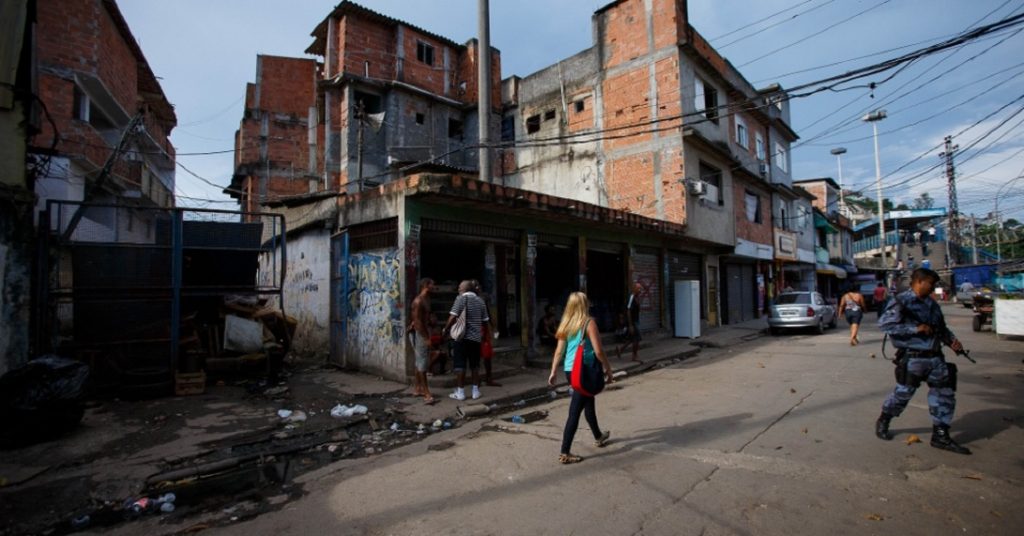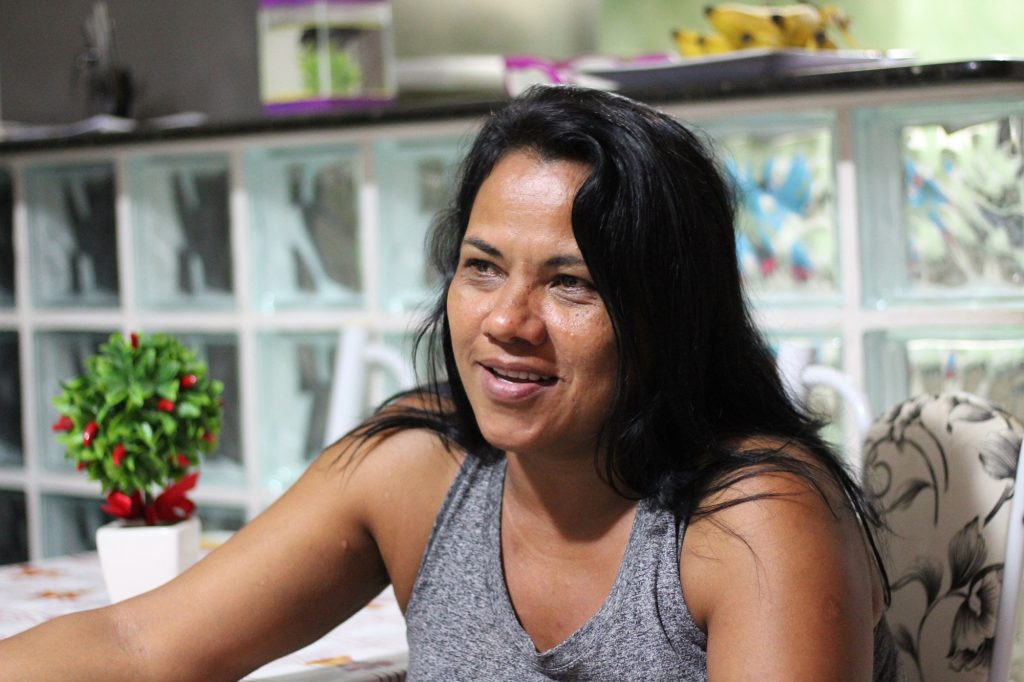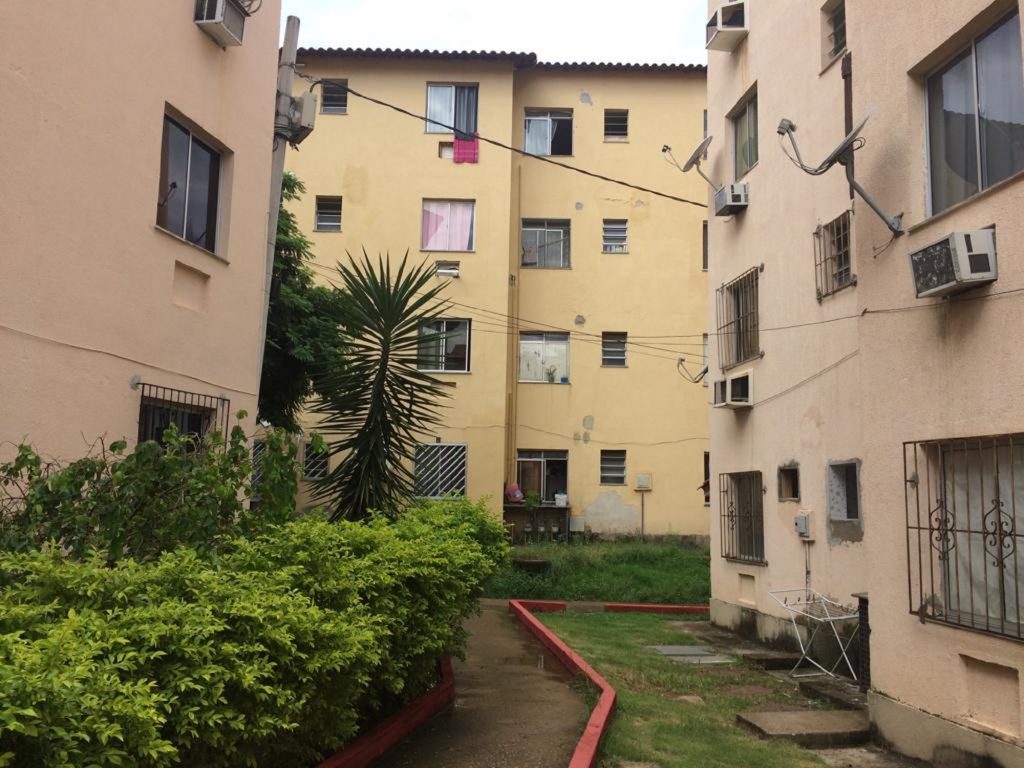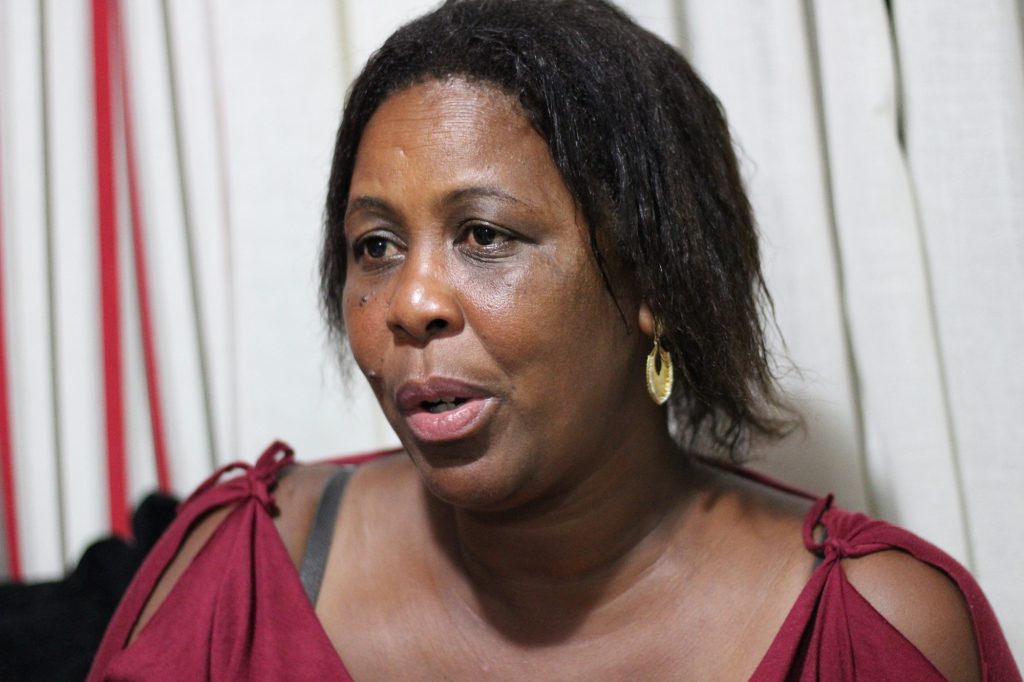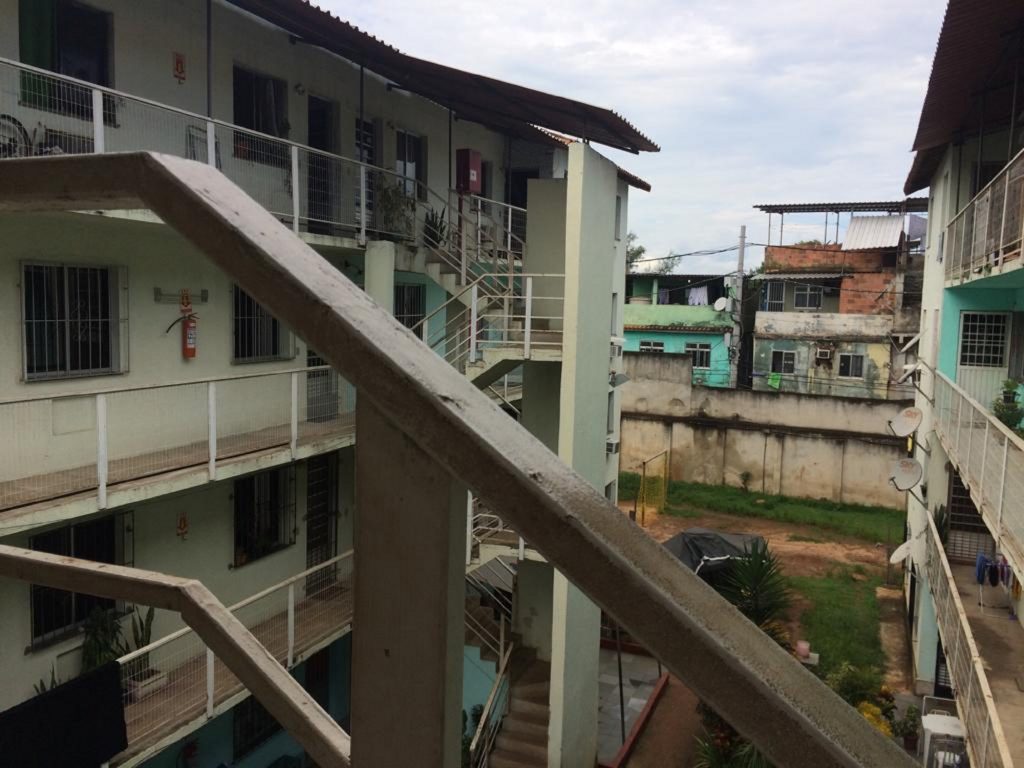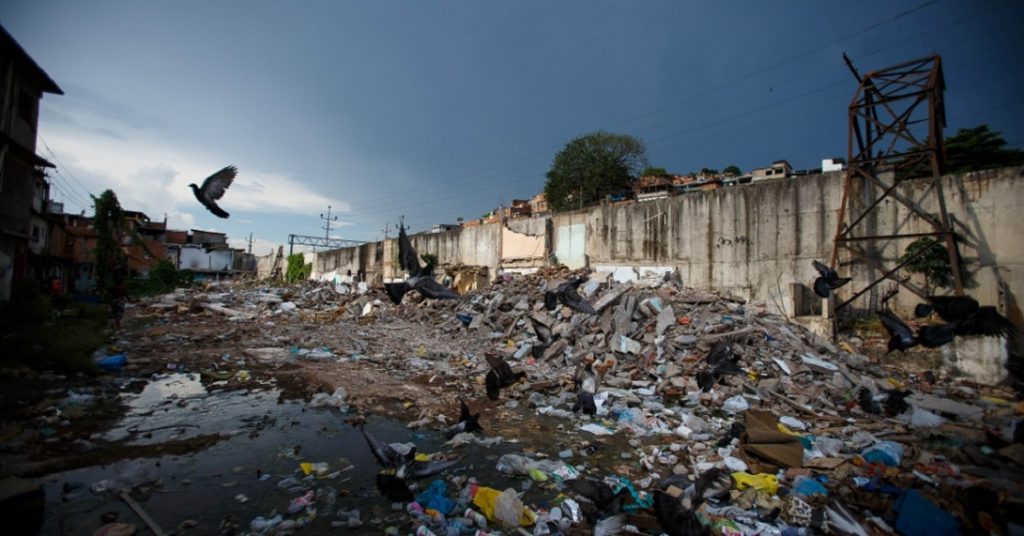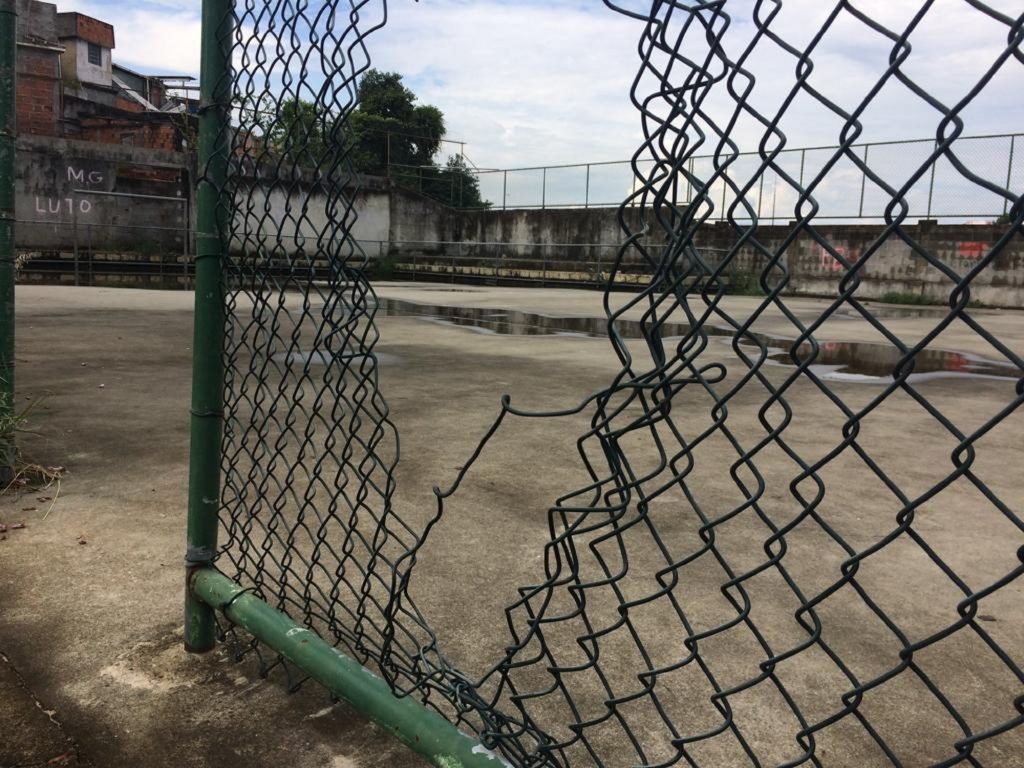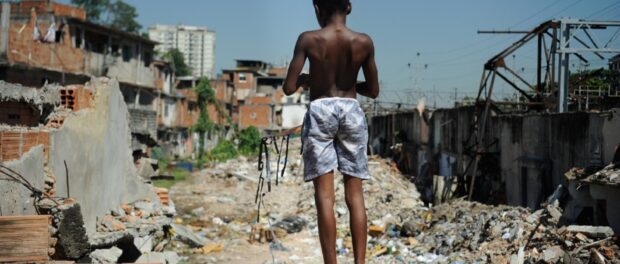
Prior to 2010, residents of centrally-located Metrô-Mangueira in Rio’s inner North Zone were approached by government workers—allegedly to sign up those in need for Bolsa Família, a government conditional cash transfer program responsible for lifting millions out of poverty. Eager to receive assistance, many residents of Metrô-Mangueira “signed up, giving their personal information to the ‘social workers.'” Little did they know that this information-gathering mission was not for the purpose of registering families for the government program; rather, the sign-up process would commence the multi-year mass eviction of the community.
According to the City, over the following four years, 685 families were evicted from Metrô-Mangueira. Almost immediately after government pressure began, 108 families were intimidated into abruptly accepting an immediate move to Minha Casa Minha Vida (MCMV) public housing in Cosmos and Santa Cruz, both located in the far West Zone of Rio some two hours away. The majority of families survived the initial eviction attempt and organized themselves under the leadership of a new Residents’ Association formed to resist further pressure. Those families (over 550 of them) successfully resisted. However, the demolition of their neighbors’ 108 homes across the community, the debris from which were intentionally left to make their lives a living hell—along with the cutting of electricity, water, and garbage collection by the authorities—brought on an era of crime, new occupations and health hazards to the community. A ‘ghost town,’ according to The Guardian at the time.
At this point residents began fighting for nearby relocation rather than distant displacement. Two MCMV public housing buildings initially intended for middle-income individuals that had recently been built nearby became the target. Residents’ revised resistance efforts paid off: from 2012 to 2013, 246 families moved into the housing complex called Mangueira I, and 217 were settled in the Mangueira II complex. Mangueira I and II are almost identical condominiums situated next door to one another, both at the foot of the larger Mangueira favela, famous for its carnival samba school. Meanwhile, the final 92 families were relocated to Bairro Carioca in Triagem, a lesser-quality complex located a few metro stops away, but nonetheless much more centrally-located than Cosmos or Santa Cruz. At the time, RioOnWatch was told by residents that those in Triagem had issues with their paperwork that resulted in their being the final ones settled.
Fast forward to 2019. Despite the brutal eviction process, Metrô-Mangueira still stands. Rumors that the site was going to be used to build a parking lot for the World Cup—or subsequently, an automobile park and leisure area for the Olympics—were never realized.
Meanwhile, the demolition debris left by the homes destroyed by City bulldozers were never picked up. And later demolitions were even more clumsy: breaking holes in the windows and roofs, tearing off doors, but not fully demolishing homes. As a result, there have since been three separate occupations of Metrô-Mangueira: the dilapidated houses still stand and continue to be occupied. In two cases the police removed new squatters from the community, and, though a number were evicted, the area still hosts a number of small shops.
Meanwhile, while residents of the nearby Mangueira favela walk through the area on a daily basis to reach the metro and train stations, many former residents, now in the Mangueira I and II public housing complexes, avoid the area as it serves as a daily reminder of the trauma of forced eviction.
After several years living in these public housing condominiums originally meant for a more upscale market, most residents are satisfied that Mangueira I and II are safer, have better access to public transportation, and are better connected to public services like water and electricity, than their old homes.
That said, many residents struggle to stay afloat. “People said that more and more bills would come. The bills didn’t arrive until three years after we got here. Before that, we thought that there wouldn’t be any bills. All that we had to pay were electric and gas bills and the condominium fee. The mayor told us that this is what we would pay. If you read all of the clauses [in the resettlement agreement], we are exempt from other bills—like property taxes, fire taxes, installments to pay off the apartment units. Why should we have to pay if the document that the City government gave us states that we are exempt from these bills? When a bill arrives, we become hopeless,” remarked Evalda “Val” Bezerra Alves.
Alves is describing an all too familiar phenomenon for evicted favela residents placed in public housing units. Favela residents who aren’t able to afford such bills are suddenly slammed with unexpected expenses that were not part of the resettlement agreement. This is not simply the unfortunate consequence of land regularization, however. It is broken promises—possibly never legally codified but nonetheless made at the outset—that characterize the dealings. Dealings made possible through the misuse of Brazil’s national MCMV housing policy which was supposed to assist those in desperate need of adequate housing. In the case of Metrô-Mangueira, a decades-old community with squatter’s rights claims that had resisted a brutal and drawn-out eviction, the MCMV housing was compensation for their resettlement. They had homes with rights claims and gave them up in exchange for the MCMV housing. Installments to pay off the apartments are in clear violation of this understanding.
Mangueira I and II Condominiums
The Minha Casa Minha Vida condominiums of Mangueira I and II were not originally built for the residents of Metrô-Mangueira, many of whom fall within Income Bracket 1 (earning zero to two times the monthly minimum wage—up to R$1600, or US$400 per month). Rather, the Mangueira I and II condominiums were intended for families that fall within Income Bracket 2—residents who make between R$1,600 (US$400) and R$3,275 (US$820) per month, or two to four times the monthly minimum wage. Led by residents like Alves and Madalena Aparecida de Assis—who now sits on the Mangueira II Condominium Council—the community’s resistance efforts were instrumental in guaranteeing the relocation of hundreds of families to the nearby site and this public housing that is considered better than other sites.
As a federally funded housing program, Minha Casa Minha Vida is not meant to aid in forced eviction; it is meant to help low-income people lacking adequate housing finance home ownership. The program assigns monthly payments based on the family’s income bracket. However, Metrô-Mangueira residents were supposed to be exempt from these monthly apartment installments because they already had homes, which were exchanged in effect. In short, they did not sign up for the program; it was forced on them. Nonetheless, in December 2018, residents began receiving yet another bill—this time, from Brazil’s state-owned bank, Caixa Econômica Federal. “[The bills] from Caixa started to arrive in December of last year—a bill for our apartments. You can see that the City was paying up until September, but after the City stopped paying… They sent [the bills] to us,” lamented Alves.
“We didn’t ask to leave. It was them [the government] who took us out of there. So we shouldn’t have to pay. That is what is right. They made a promise to us. After the new mayor [Marcelo Crivella] was elected, the City stopped paying,” Assis added. According to Alves and Assis, residents had been able to track the payments up until September 2018, when the City appeared to stop disbursing the funds. Alves and Assis report that they are now billed R$54 (US$13.50) and R$32 (US$8) per month, respectively, while some residents receive bills as high as R$100 (US$25) and R$200 (US$50). These amounts roughly correspond to the traditional Minha Casa Minha Vida amortization schedule (adjusted in 2014), whereby monthly installments are set to equal 5% of gross monthly incomes for families that fall within Income Bracket 1.
While this may not seem like much, it adds extra weight to the shoulders of the families in Mangueira I and II. According to Alves, she spends approximately 80% of her monthly salary on bills alone. And she knows that many residents have it worse off than her. According to Daniela Ferreira de Oliveira—an urban engineer from the Federal University of Rio de Janeiro (UFRJ) who surveyed a swath of individuals placed in Mangueira I and II and Triagem—a significant majority of those removed were women, and individuals between the ages of 26 and 39. Oliveira noted that a large portion of those evicted were young adults, and thus, individuals of working age. Of those workers interviewed, a majority had not completed the 8th grade, with 37% earning up to two times the monthly minimum wage and 53% earning between two and four times the monthly minimum wage. This puts 90% of the working residents squarely within Income Brackets 1 or 2. However, dividing total family income by the number of family members paints a more accurate picture: 49% have a per capita income between R$0-500 (US$0-125) and 39% between R$501-1000 (US$125-250).
The Impact of Evictions
While the residents evicted from Metrô-Mangueira are relatively better off than many evicted in the past decade in Rio, the aforementioned author comments: “Considering another sociospatial reality, the MCMV condominiums and all the service costs that come with them, this income ends up not being adequate enough.” Alves and Assis mirrored this sentiment and stated that specific families struggle more than others, especially in Mangueira I, which was completed first and which houses many families that had become desperate to leave Metrô-Mangueira due to the ruinous state the community had been left in. This desperation is thus both fruit of some residents’ historical situations of poverty and was exacerbated by the horrendous conditions left by the government when destroying parts of the community in an effort to push residents out.
“There are people here who don’t even have the means to survive. How are they expected to pay these bills? There are people here who receive less than one minimum wage and have children at home. They don’t even have enough money to pay for daily meals. The woman next door, for example, has three kids. Her husband works at the market selling fish. She only receives Bolsa Família. I thought that they had abandoned their apartment because the lights have been shut off. There are people who are selling their apartments for almost nothing. They are almost giving them away because they can’t pay the bills and are moving back to other favelas. I paid R$550 (US$140) last month in bills alone,” Alves reflected.
The situation points to the inefficacy of eviction as a public housing policy, especially when implemented in tandem with the federal Minha Casa Minha Vida program. It has been shown that MCMV can reproduce social inequalities and Metrô-Mangueira is an emblematic case. In an effort to “change the situation of vulnerability and offer more dignified living conditions to residents,” the government has, in effect, locked residents into a cycle in which upward mobility is nearly impossible to attain forcing many to live in poor conditions and others to move back to favelas and start anew. Without continued support or resources from the government, residents noted that their water tower, which holds water for Mangueira I and II and was donated by a partnership with the German government, is in disrepair. Residents were not trained in upkeep or management. The condominiums have solar powered water heaters as well, but the equipment relies on the expertise of outsiders instead of residents themselves.
The mayor plans to build several more MCMV condominiums in the Mangueira region in the next couple of years, some of which will house evicted individuals. Mangueira I and II arguably have some of the best outcomes when it comes to evicting residents to public housing: residents feel safer, are close to where they lived before, and have better access to public services. Nonetheless, even in nearby Triagem, an 11-year-old girl was hit by a stray bullet when fighting broke out between drug gangs and police. Other communities have experienced significantly worse situations in public housing being moved to the far West Zone—far from services, their old lives, and, in some cases, into regions controlled by vigilante off-duty police mafias called militias. Metrô-Mangueira exemplifies the difficulties faced by residents after eviction, even when authorities guarantee a “best case scenario.” The City would do well to fulfill its promises before breaking ground on new public housing in the area. As Alves described, summing up the residents’ situation: “Here, you have to work really hard. Nowadays, we cry when the bills come.”

